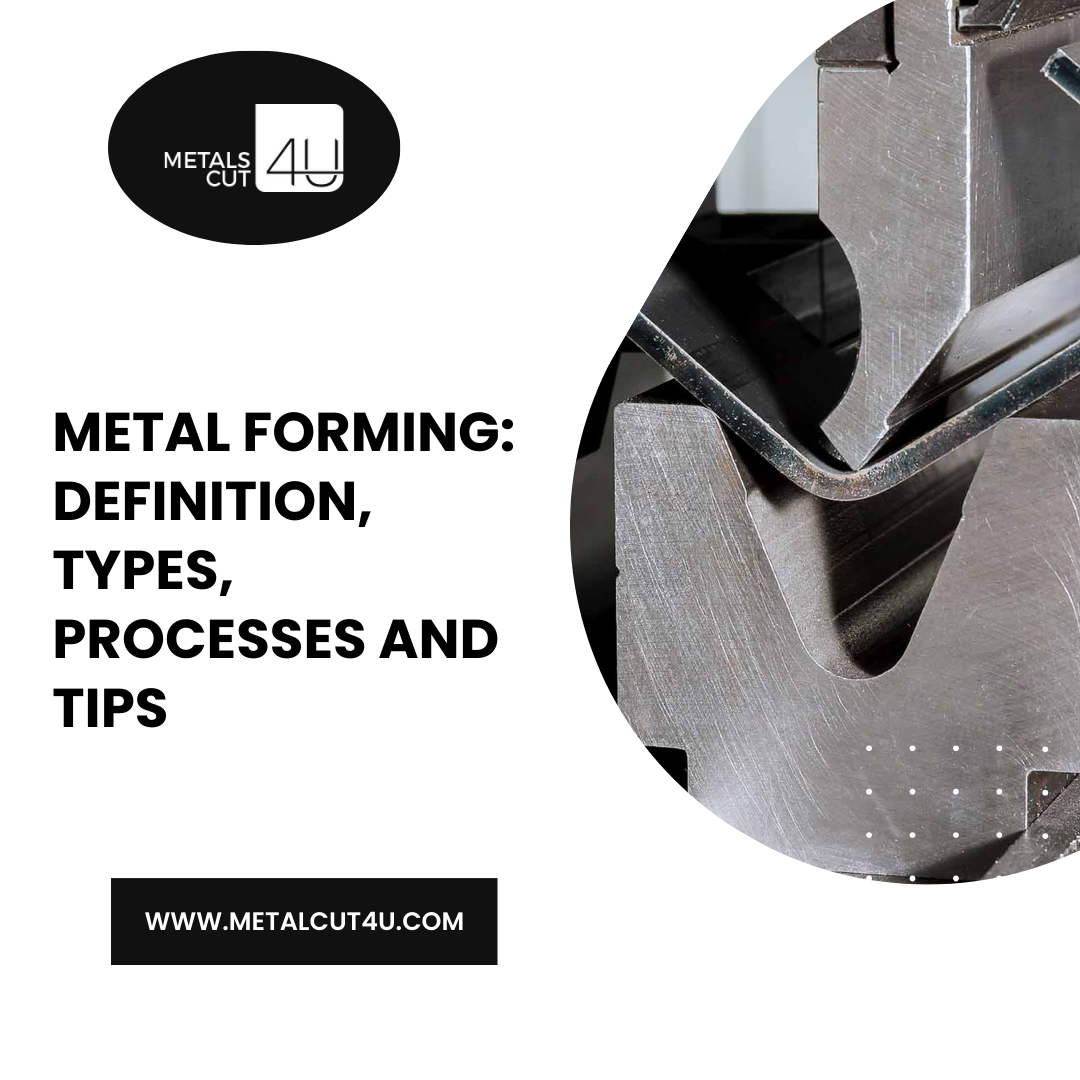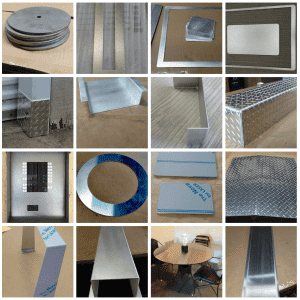Metal Forming: Definition, Types, Processes and Tips

Metal is everywhere around us. The cars we drive, the tools we use, even the smallest household items; most of them begin as raw sheets or blocks of metal that are reshaped into something useful. That reshaping is what we call metal forming.
While many think of it as a mechanical task, metal forming is also a craft. It blends technical skill, an understanding of material behavior, and at times, sheer physical strength. If you have ever seen a blacksmith hammer a glowing piece of steel, that is metal forming in its oldest form. Today, machines handle much of the work, but the basic principles remain the same.
This article explains what metal forming is, explores the main types of metal forming, the most common metal forming processes, the tools involved, and some safety considerations to keep in mind.
What is Metal Forming?
Metal forming, in the most basic sense, is about reshaping metal into a new form while keeping all of the material intact. Instead of cutting away material the way drilling or milling would, it works by applying force until the metal takes on a new form. This can involve bending a piece, stretching it out, or flattening it under pressure. Think of how you might twist a piece of wire into a small hook. The metal hasn’t gone anywhere; it has only taken on a different shape.
The appeal of metal forming lies in its versatility. The same principle that lets someone bend a strip of copper for jewelry also creates huge panels for airplanes. Getting it right frequently requires being able to detect the thin line separating a fracture from a clean bend. It is part science, part experience.
Types of Metal Forming
The types of metal forming are generally grouped by the kind of force applied. Some methods squeeze metal, others pull it, and many combine both.
Compressive Stress Forming
Here, the material is pressed into shape:
Forging
Forging has been around for thousands of years. Centuries ago, blacksmiths forged swords and farm tools. Today, industries still use forging for crankshafts, gears, and even aircraft parts. The method has endured, although the scale and tools are now far more advanced.
Die Forming
With die forming, the metal is forced into a die or mold so it takes on a specific shape. This is especially useful for mass production, since each part comes out identical to the last.
Tensile Stress Forming
Instead of pressing, this technique stretches the material outward. It is used when a thinner, elongated shape is needed.
Combined Stress Forming
Some processes mix both compressive and tensile stresses.
Stretching
Thin sheets can be stretched into molds. Aircraft skins are often made this way.
Indenting
Indenting leaves marks or impressions. Coins are a good example.
Expanding
Tubular metals can be expanded outward using internal pressure.
Recessing
The opposite of expanding. The material is pushed inward to form cavities or recesses.
The range of types of metal forming highlights how flexible these methods are, covering everything from heavy machinery parts to tiny decorative items.
Difference Between Hot Working and Cold Working Metal Forming?
Different metal forming processes are carried out under different temperature conditions. Heat changes how metal behaves, which leads to two major categories.
What is Hot Working Metal Forming?
In hot working metal forming, the process takes place at very high temperatures, usually above the point where the metal recrystallizes. The main benefit is that heat softens the metal, which makes reshaping easier and reduces the risk of cracking. Blacksmiths still use this method when heating steel before hammering.
What is Cold Working Metal Forming?
Cold working metal forming is carried out at or near room temperature. It takes more force but produces parts with greater strength and cleaner finishes. The problem with pushing metal too far at room temperature is that it can start to crack once you cross its limits. Still, for precision and durability, cold working is often the preferred choice.
In practice, both techniques can complement each other. Manufacturers may hot work a rough shape and then finish with cold working for detail.
Metal Forming Tools and Equipment
Without the right equipment, metal forming would be nearly impossible. The tools used today range from simple to highly advanced.
Dies and Molds
These shape the metal into exact forms. Everything from bottle caps to automotive parts may pass through a die.
Rollers
Rollers reduce thickness or flatten sheets. They are critical in sheet production.
Cutting Machines
Although cutting is not technically forming, these machines often prepare or finish the material by trimming excess edges.
Presses
A press works by applying steady pressure, which is why it’s so commonly used in stamping and die forming.
Welding Equipment
Once parts are formed, welding is often used to join them into complete assemblies.
How to Choose the Right Metal Forming Technique
Selecting the best method depends on several factors: the type of metal, its thickness, the desired shape, and the production volume.
Take aluminum as an example. Known as the most malleable metal, it can be stretched and bent with ease, making it suitable for delicate shaping. On the other hand, titanium, one of the strongest metals on Earth, requires much more force and often benefits from hot working.
When working with sheets, the types of sheet metal forming processes matter. A thin sheet may stretch easily, while a thicker grade resists bending and needs far greater force. That is why different types of sheet metal respond differently to forming techniques.
Some of the most widely used sheet metal forming processes include bending, stretching, and stamping, each suited for different applications. Another factor worth keeping in mind is the melting points of metals, since that affects how they behave under heat.
For personal or small-scale projects, many people turn to local metal fabricators who have the tools and expertise to get things right. For businesses, opting for custom sheet metal fabrication ensures parts are made to precise specifications.
Safety Considerations in Metal Forming
Working with metal can be risky. Hot surfaces, sharp edges, and heavy machinery all demand respect. Following metal forming safety tips like wearing protective gloves, goggles, and proper footwear can make all the difference. Adequate ventilation in work areas is also vital, especially when heating or welding metals. Safety may feel routine, but it is the foundation that keeps the work consistent and the results reliable.
Final Words on Metal Forming
The craft of metal forming has a long history, yet it continues to play a vital role in how we build things today. Our world depends on these techniques. The frame of a bridge, the shell of an appliance, and even the small components inside electronics all rely on metal forming processes. The fundamentals remain the same: apply force, guide the shape, and respect the limits of the metal. What changes are the tools, the expectations, and the materials we use.
Choosing between hot and cold working, selecting the right tools, and understanding the material all play a role in producing strong, reliable results. With so many types of metal forming, it becomes clear that different jobs call for different methods. Each approach has a place, shaped by material, purpose, and design.
Choose Trusted Metal Fabricators - MetalsCut4U
When precision and reliability matter in your metal projects, MetalsCut4U can provide the support you need. Whether you need bending, cutting, or complete custom sheet metal fabrication, our team ensures accuracy down to the smallest detail. Give us a call at 440-822-6381, and we will work with you to shape the right metal solution for your project.
